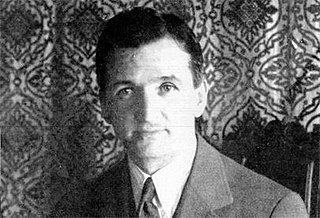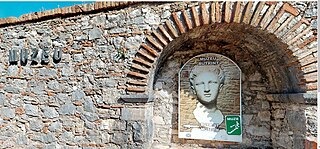Related Research Articles
Below are notable events in archaeology that occurred in 1937.
Below are notable events in archaeology that occurred in 1934.
The year 1810 in archaeology involved some significant events.
The year 1999 in archaeology involved some significant events.
Below are notable events in archaeology that occurred in 1925.
The year 1956 in archaeology involved some significant events.
The year 1954 in archaeology involved some significant events.
Below are notable events in archaeology that occurred in 1902.
Below are notable events in archaeology that occurred in 1928.
Below are notable events in archaeology that occurred in 1933.
Below are notable events in archaeology that occurred in 1935.
John Bryan Ward-Perkins, was a British Classical architectural historian and archaeologist, and director of the British School at Rome.
Geraint Dyfed Barri Jones was a classical scholar and archaeologist.

Luigi Maria Ugolini (1895–1936) was an Italian archaeologist.

Phoenice or Phoenike was an ancient Greek city in Epirus and capital of the Chaonians. It is located high on an almost impregnable hill commanding the fertile valley below and near the modern town of the same name, Finiq, in southern Albania. It was the wealthiest city in Epirus and had the strongest walls until the Roman conquest. It was the location of the Treaty of Phoenice which ended the First Macedonian War. The city is part of an archaeological park.
The decade of the 1780s in archaeology involved some significant events.

Thomas Ashby, was a British archaeologist and director of the British School at Rome.
John Lloyd was a British classical archaeologist.

The Archaeological Museum of Butrint was opened in 1938. It was reopened during the 1950s-1960s in the premises of the Venetian Acropolis Castle within the acropolis of the ancient city. It containes the Graeco-Roman archaeological finds from the Italian Archaeological Mission of the period between the two World Wars, led by Luigi Maria Ugolini.
References
- ↑ Nash, Ernest (1961). Pictorial Dictionary of Ancient Rome. Vol. 1. New York: Frederick A. Praeger. p. 268.
- ↑ Birley, Anthony (22 July 1999). "Barri Jones". The Guardian. Retrieved 17 April 2017.
- ↑ "Ugolini, Luigi M. (Luigi Maria) 1895-1936". worldcat.org. Retrieved 31 May 2017.